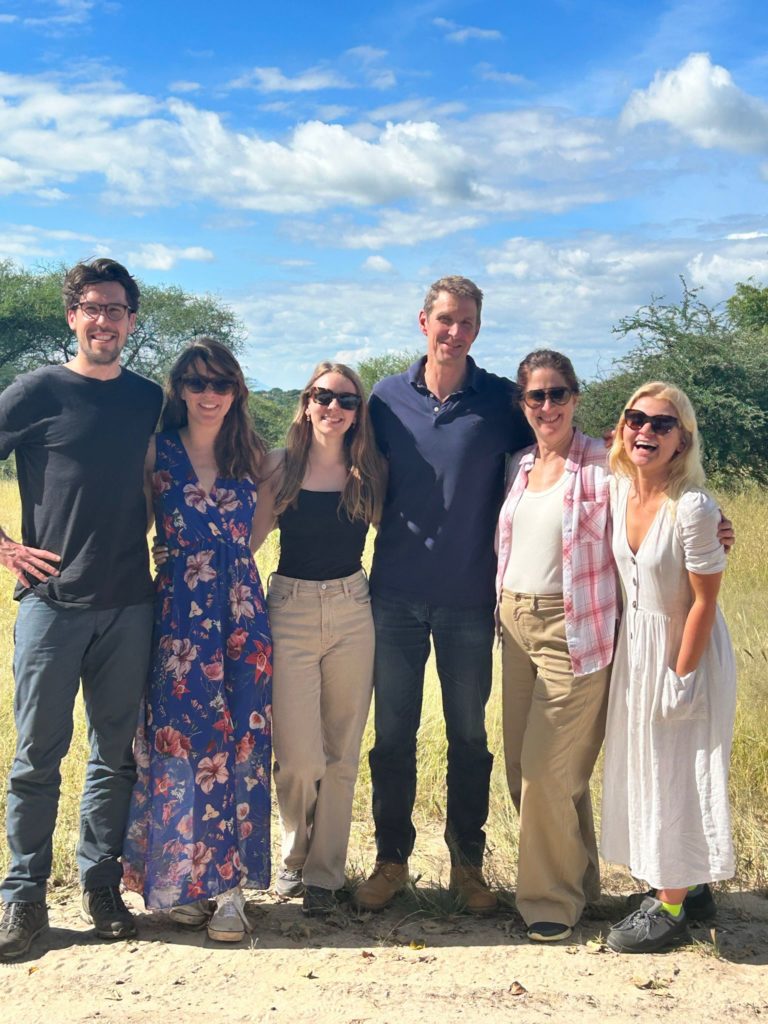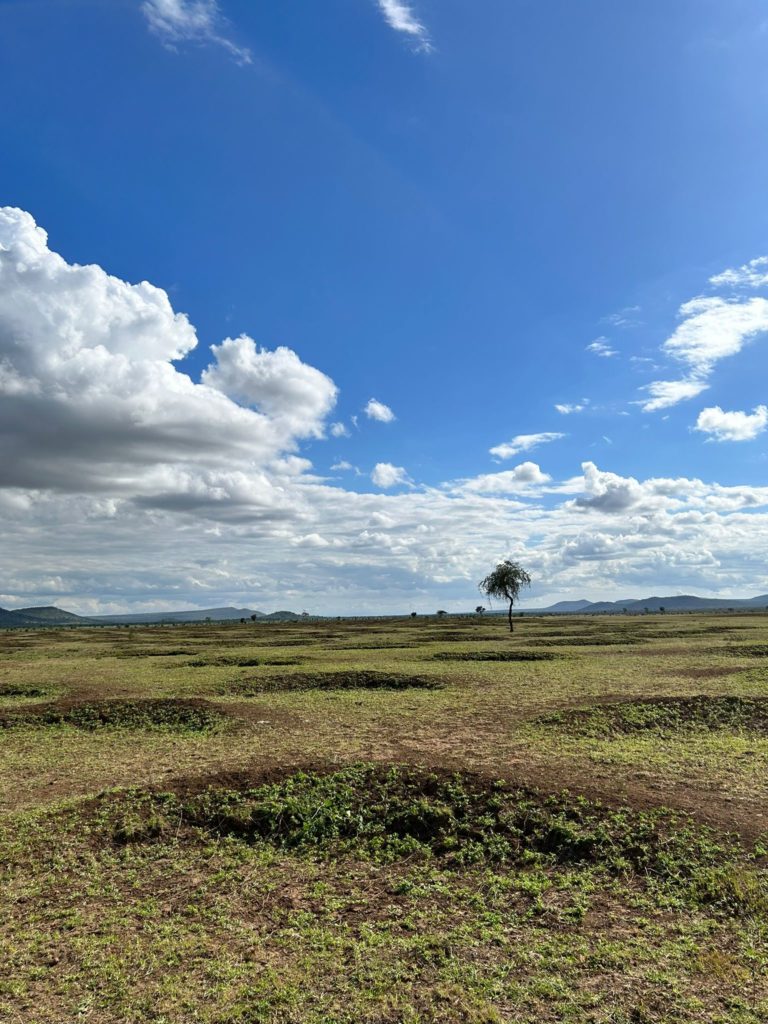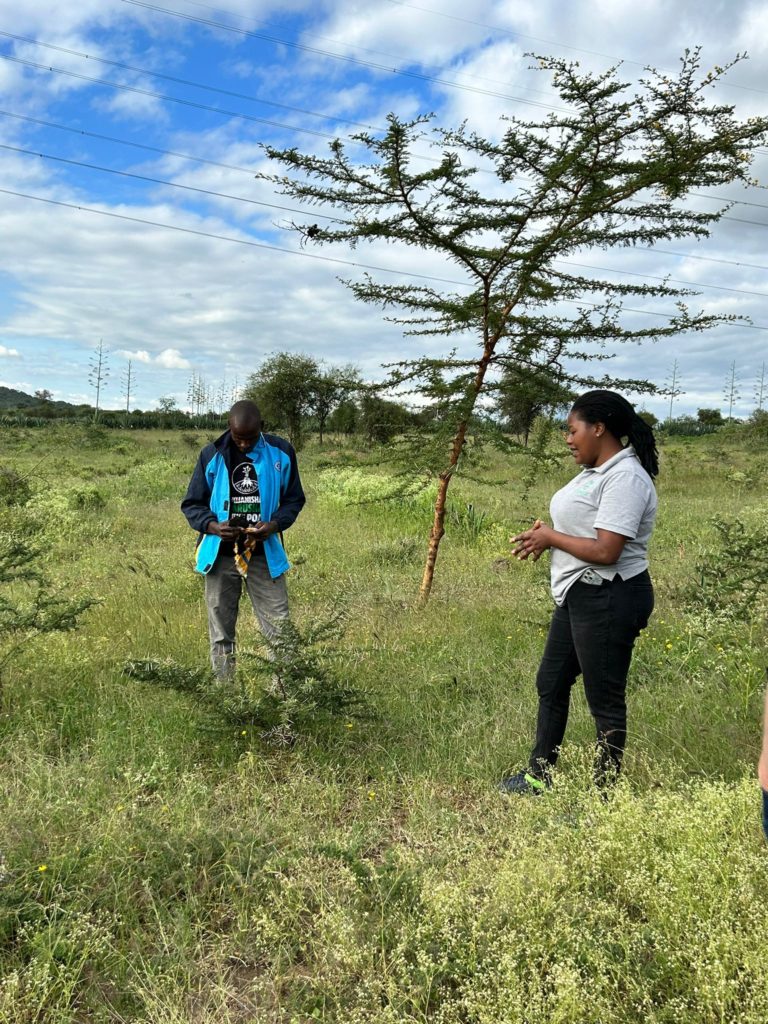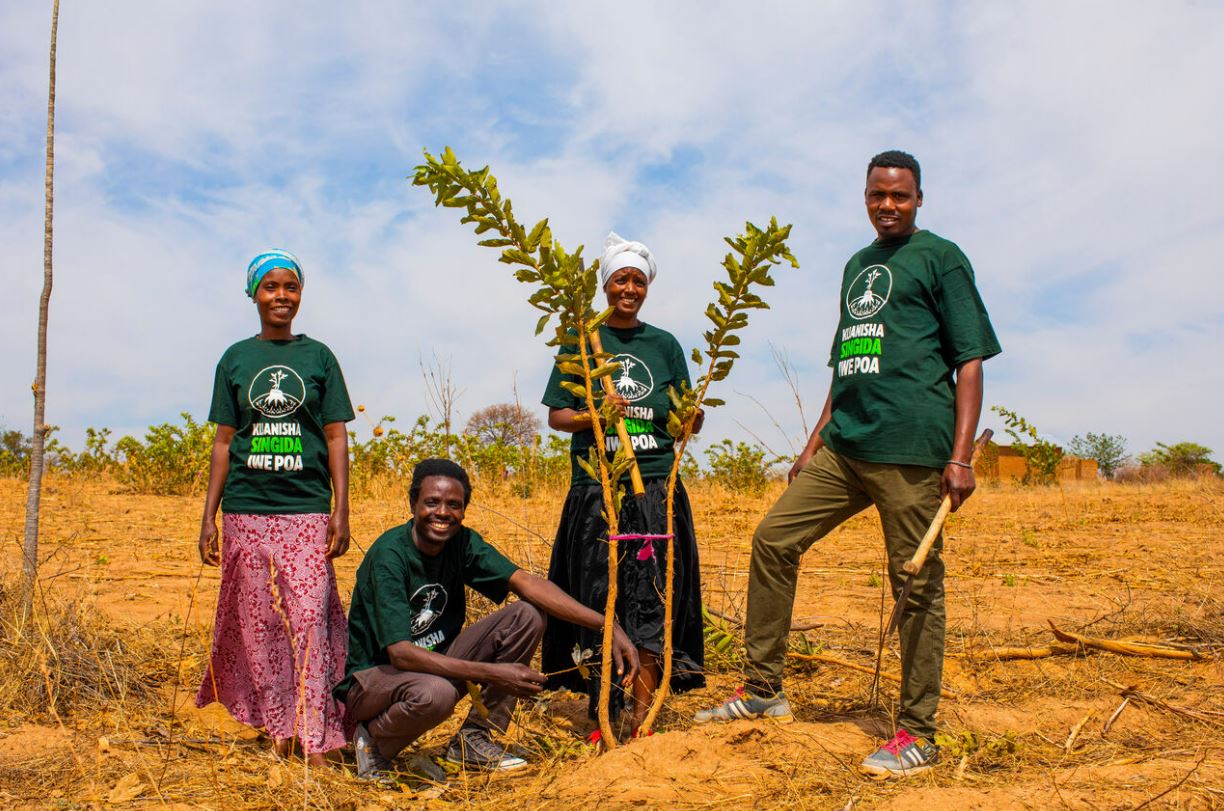Waters of Life: how Tanzania is digging for climate victory
SHARE
Charlotte Firth
21 Jun 2023
Welcome to Arusha, a city in north-eastern Tanzania and at the heart of East Africa’s worst drought in over 40 years. And while the country may be known for its wildlife, Tanzania is facing a growing number of environmental concerns leaving its rich biodiversity under threat.
But the country is not planning to sit idly by and watch its precious flora and fauna disappear.
With a vision to regreen a landscape beset by the human-driven climate crisis, Tanzanian farmers and pastoralists are digging in – quite literally. They’re using legacy techniques to counteract the devasting impact of the drought while making the land more hospitable for crops.
These techniques are very much inspired and supported by Deutsch non-for-profit organisation, Justdiggit. The grassroots organisation in Africa works hand-in-hand with communities and local partners to restore dry land and rejuvenate dying roots already in the ground. Land and crops that might otherwise have been abandoned by farmers and livestock.

As the charity’s communications partner in the UK, Harvard was lucky enough to visit some of the projects in Arusha in May to see first-hand how the charity’s regreening techniques – including rainwater harvesting, tree restoration, and developing grass seed banks – have had a positive impact on the region.
A country on the brink of ecological disaster
Rapid deforestation means more than 370,000 hectares of Tanzanian forest are cleared every year for charcoal, firewood, and lumber without a clear plan for reforestation. The health and livelihoods of farming communities in rural parts of the country hang on a knife’s edge as desertification increases, with severe consequences too for wildlife whose habitats are being lost.

With more than three-quarters of Tanzania’s population relying on crop growth and seasonal rainfall to survive, African Governments know that they need to respond quickly. The message from them is clear: plant trees – and plenty of them – to promote sustainability.
But is choosing to plant new trees on dry land the best way to supercharge local economies and decarbonise the environment, as the planet reaches its global warming threshold?
Not according to regreening powerhouse, Justdiggit.
Renew, not new
While good in theory, planting new trees is much trickier in practice.
It requires an initial investment that isn’t just monetary (farmers do have to buy the seeds after all), but also water, which is scarce, and soil with nutrients which are crucial to the crops’ growth.
Regreening, on the other hand, is much more cost-effective. Through a process of reinvigorating dead roots and careful pruning (as we learned on our trip, restoring trees requires pruning upwards to prevent them growing outwards) seemingly dead trees can be given a second shot at life. And all with a far more manageable water supply and nutrient requirement.

Then this is a demonstration of a technique called Kisiki Hai – tree pruning. Rather than planting trees and potentially destroying the ecosystem with too many and not enough water, Kisiki Hai brings trees back to life, helping them grow. Justdiggit call this process ‘treecovery’
With the right care, what were once stumps have the chance to grow tall once again, bursting back into leaf as real trees – and with the ability to absorb much more water than new seedlings.
These trees then provide much-needed shade in desertified terrain – under which other plants, livestock, and the ground itself, can flourish.
Saving for a not-so-rainy day
When visiting the projects in Arusha, we were struck by just how prevalent Justdiggit’s regreening techniques had become. Not just in terms of “tree-covery”, but also rainwater harvesting.
But Justdiggit’s not just looking to revitalise crops alone, they have also popularised ancient methods of rainwater harvesting. Namely, the digging of bunds.
The creation of water bunds – effectively a semi-circular hole dug to open the hard top layer of soil – work to reduce water shortages in the region. It’s a farming technique which the charity has already implemented on communal land in the Chyulu Hills and Amboseli and which is now making its way across Tanzania.
The bunds slow down and capture rainwater running downhill to prevent the erosion of fertile soil. In so doing, water balance is restored which increases the water availability for the seeds still present in the soil. These seeds now get the chance to sprout, which means regreening!
Within the Arusha project area, the Maasai community has already dug 22,000 water bunds. From a bird’s eye view, the terrain now looks like an advert for pieces of Terry’s Chocolate Orange!
The first rule of treecovery is ALWAYS talk about treecovery
We also met some of the area’s Champion Farmers (50% of whom are male and 50% female). These are well-connected farmers who work in the local community to educate their peers on the most effective farming strategies.
The climate movement is often beguiled by glitzy, high-tech solutions but these can be a costly distraction from tactics that will have the biggest impact. The reality is that nature-based solutions can mitigate global warming by more than a third (37%) – regardless of whether they’re implemented at home or away.
As a communications professional in London, it can be easy to get caught up in the negative climate narrative we see in broadsheets and online. But crucial, decisive work is being done by those who are often the least inclined to shout about it. Next time you’re fed up with green-washing or feeling a little overly pleased with yourself for recycling, remember how much fantastic work is being done miles away from your front door.
While you might not be able to see it, it does benefit us all.
Asante!
Discover why climate change is the biggest comms challenge of our times.


